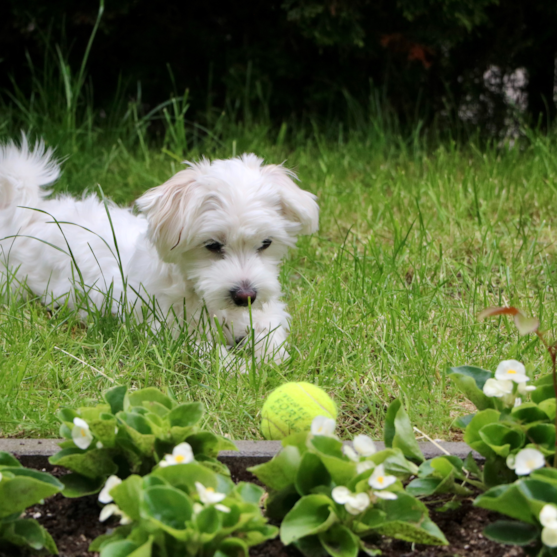Maltese Breed Information


Also known as a “living piece of jewelry,” the Maltese is one of mankind’s favorite toy dog breeds. Maltese dogs are known for their many skills in therapy, companionship, and the show ring. They are equipped to charm anyone and are loved for their endless qualities.
One of their most loved qualities is their friendliness. The Maltese are sweet-tempered, kind dogs that like everyone. They are not shy around strangers and love having a big family to cuddle and play with. They are also quite intelligent, training quite nicely as both puppies and adults.
When it comes to popularity, you might not be surprised to learn that the Maltese is one of the most popular purebred dog breeds of our time. The world loves them for their delightful nature and gorgeous looks, and so do we.
Characteristics
- The Maltese is one of the most popular toy breeds in the world today
- The breed received its recognition from the American Kennel Club in 1888 and is a part of the club’s Toy Group
- The Maltese hypoallergenic coat has excellent properties. Dander is minimal, and the breed doesn’t typically shed, making it a great companion pet for owners who suffer from mild or severe pet-related allergies
- The coat of the Maltese is white with the occasional shades of light cream or gray on the ears during puppyhood
- Maltese dogs have a calm, well-balanced temperament that suits families with small children well
- Given their small size and friendly personalities, Maltese are great for city and apartment life
- The adoring nature of the Maltese make them fantastic therapy dogs

Appearance
A cute dog that inspires instant adoration, the Maltese is one of the most loved toy dogs of our time. Sporting a pure white coat and dark, expressive eyes, this pup can win any beauty contest.
The Maltese are part of the AKC’s Toy Group, which means their size is small and adorable. The typical size for an adult Maltese dog will be small to toy, weighing between 4 to 7 pounds and measuring 9 to 10 inches tall. You can also find smaller sizes in the breed such as the micro and the teacup Maltese. These smaller versions of the breed can weigh as little as 3 pounds.
The long Maltese coat is one of the breed's most loved features. It grows continuously and is straight, white, and silky. Shedding is minimal for this breed, which is why allergy sufferers favor these dogs. The glamorous, long coat of the Maltese can be styled in many ways, but most owners opt to keep it floor-length, with a cute ponytail on the top of their heads.
The Maltese also rocks the short, puppy, or teddy bear cut. These haircuts give them a youthful, puppy-like appearance, and are very easy to maintain.
Other adorable features of the Maltese dog include floppy ears, a dark button nose, dark round eyes, and a feathered tail that is worn upwards.
Temperament
Being a dog that loves attention passionately, the Maltese is happy in any living situation. These dogs have a great temperament that suits all types of families. They are calm, sweet dogs that love to play with both people and other pets. They get along quite well even with cats, and they don’t mind strangers.
The playful personality of the Maltese is one of the reasons this breed is preferred by families with small children. Maltese dogs aren’t aggressive or hot-tempered. They have no problem sharing their toys and are quite fond of running around all day with their toddler friends.
The Maltese’s intelligence is high, which makes them very easy to train, but they can also be spoiled into not obeying their owners. Although stubbornness is not known to be in their genes, they can certainly be spoiled into it. Too much pampering can cause them to become jealous of other dogs, impatient, and weary or shy of strangers.
One of the best personality traits of the Maltese is their ability to tailor themselves to the needs of those around them. For this reason, they are considered one of the best dog breeds for therapy work. These dogs love cuddles and shows of affection. They are happy lapdogs that thrive in a loving family environment.
Care
Grooming
If you love the long-hair Maltese look, you can expect to spend some time brushing and combing. Keeping your Maltese coat long, gorgeous, and tangle-free, will require you to brush it for a few minutes each day. Brushing doesn’t have to take up more than a few minutes, especially if you do it daily.
If you prefer the teddy bear Maltese cut or the Maltese puppy cut, grooming will be much easier. Since these haircuts are both short, brushing can be done once or twice weekly.
Other aspects of Maltese grooming include bathing them once every month or so, clipping their nails short, and brushing their teeth daily. Because they have drop ears, these beautiful dogs also need to have them checked and cleaned regularly to avoid any infections.
Tear stains, which are brown or reddish stains under the eyes, are common for the Maltese, given their white coats. To keep them from forming, it is recommended to wipe their eyes regularly with a damp cloth.
Exercise Needs
The Maltese can be energetic and in some cases even hyper-active. They love being on the move, especially when games and family adventures are involved, but they can also tailor themselves to the energy of their owners, which means they can also be happy as couch potatoes.
For most Maltese dogs, the ideal daily exercise routine includes 30 minutes of outdoor walks and some free zooming indoors. For hyperactive dogs, daily walks can go up to an hour.
Health
The Maltese is a healthy pooch that isn't known to run into major health problems. The occasional common issues can arise, such as dental issues, vision problems, especially during old age, ear infections, and allergies. Weight problems, although not as common in the Maltese as it is in other dog breeds, can happen if the dogs are over-fed and under-exercised.
Although they can sometimes be prone to white dog shaker syndrome and patellar luxation, these are rare and non-life-threatening. To ensure your little fur baby doesn’t encounter these problems, it is recommended to schedule regular vet inspections and check-ups.
Lifespan
The Maltese is a healthy and happy dog, and this is the best recipe for a long life. While some Maltese dogs have been known to live up to 20 years, the average life expectancy for these dogs is between 12 and 15 years. You can help your fur baby live a long and happy life by providing a lifestyle that includes plenty of exercise, regular trips to the vet for check-ups, and a good diet that contains high-quality dog food tailored to your dog’s size, age, and energy levels.
Training
Training your Maltese puppy will be one of the easiest and most fun things you get to do with your new fur baby. Given their high intelligence and eagerness to make you happy, these puppies will be effortless to train. All they need is attention, treats, and some praise to do everything that is asked of them.
Positive reinforcement works wonders when training Maltese puppies. They adore being encouraged in a joyful tone of voice and love the praise. Rewards in the form of delicious treats are also high on their list of favorite motivations.
Training has many aspects to it, including socialization, leash walking, potty training, and independence training. These are all easy for the Maltese, nonetheless, they should be checked off the list.
For socialization, the Maltese does most of the work, being a naturally friendly dog that gets along with just about everyone it meets. Potty training will also be easy and so will the transition from puppy pads to outdoor potty breaks. Patience is required; however, the Maltese is known to be a quick learner.
Leash training can be a bit more challenging, as it takes some time to master. This lesson should begin indoors, giving the Maltese puppy an opportunity to get used to the leash and collar before moving to the outdoors. You can practice walking your puppy on a leash while indoors until its vaccinations are up to date. This will give both of you time to become familiar with the activity. It will also make the transition easier when the time comes to move to the outdoors.
History
One of the more ancient dog breeds in the world, the Maltese has been around for more than a thousand years, charming dog lovers in every part of the world. They are believed to have originated in the Isle of Malta, an island in the Mediterranean Sea. Also known as “the ancient dog of Malta” the Maltese is believed to have been named after its origin.
Although their history is quite long and filled with achievements, their finest hour was in the era of kings and queens. Centuries ago, when kingdoms ruled over the world, the Maltese was the favorite companion pet at royal courts. During those days, it was difficult for ordinary folk to house pets that didn’t have any purpose other than providing companionship. So, naturally, only the very wealthy could house and feed a pet solely for their company. In fact, it was very hard to find a royal palace or high society home without a Maltese companion in it. Court ladies were the biggest fans of the little white dogs, often carrying their small pets on their sleeves.
The Maltese reigned happily near their royal owners for centuries. Prominent historical figures that owned and adored the Maltese include Aristotle, Queen Victoria, and King Henry VIII.
As the Maltese spread out from Europe to other continents, it became one of the most loved dogs in the world, a title the breed still holds today.
